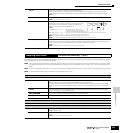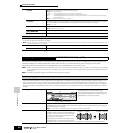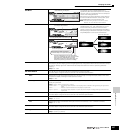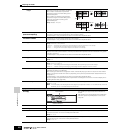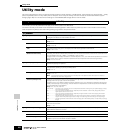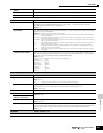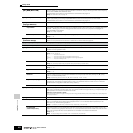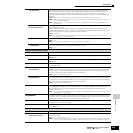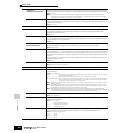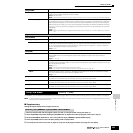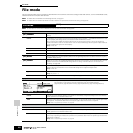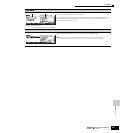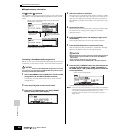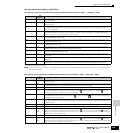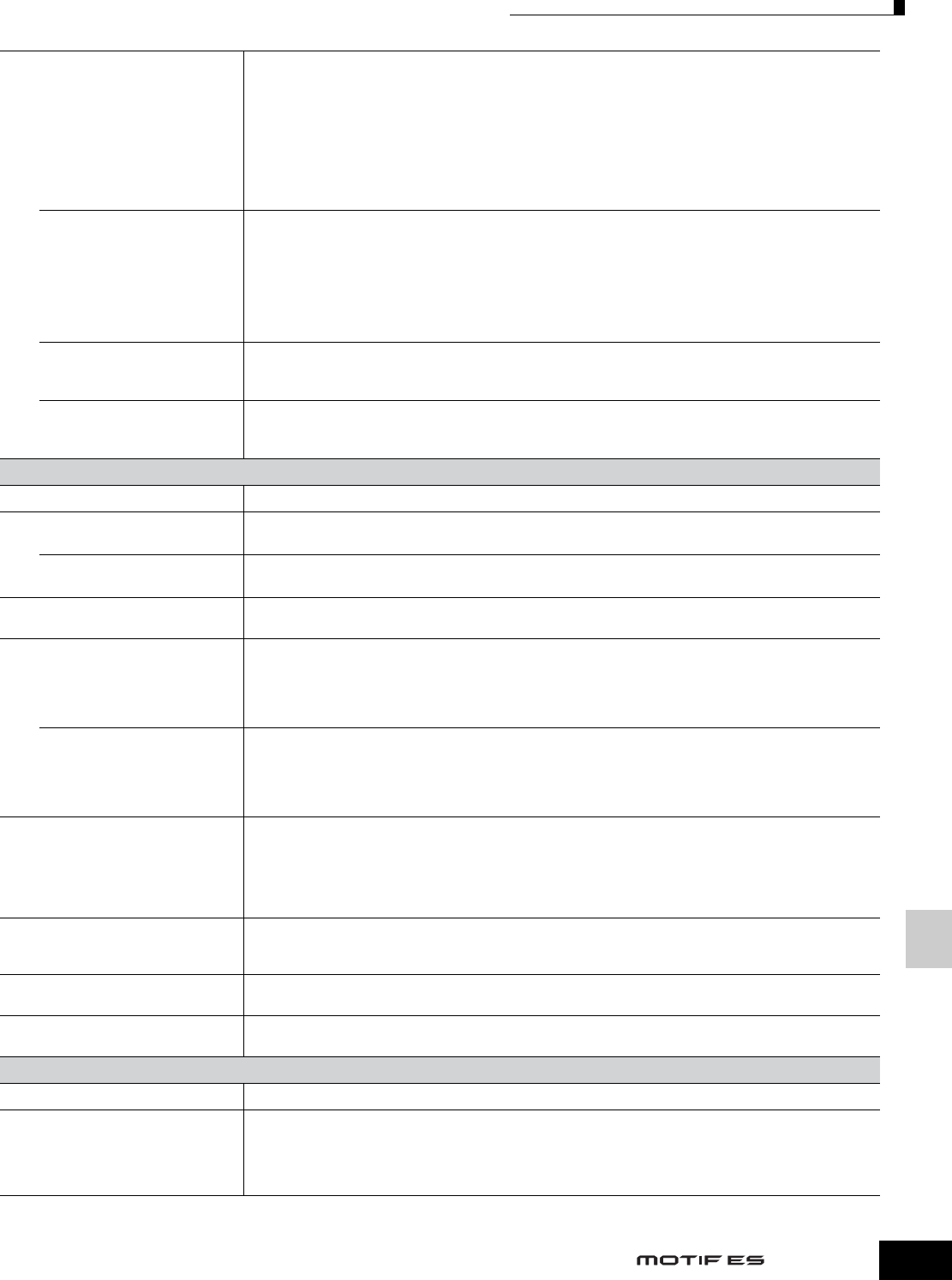
Reference Utility Mode
Utility mode
263
Owner’s Manual
SongEventChase Event Chase allows you to specify which non-note data types are properly recognized during fast-forward and
rewind operations. Normally, if a Song or Pattern is played back from mid-point and/or fast-forward or rewind are
used, certain data types (such as Program Change, Pitch Bend, and Control Change) may not play back as
expected. Setting this to a specific event ensures the playback integrity of the event, even when fast forwarding or
rewinding.
Settings: Off, PC (Program Change), PC+PB+Ctrl (Program Change+Pitch Bend+Control Change), all (All events)
n Keep in mind that settings other than “off” may result in slower operation — for example, a pause before starting playback, or
slower rewind/fast forward speed.
n When this is set to “all,” an excessive amount of MIDI data may be generated, possibly resulting in a MIDI error on the
connected device.
DumpInterval (Bulk Dump
Exclusive Interval Time)
When playing back system exclusive data (bulk data) that is recorded on the sequence tracks, this sets the interval
that is inserted for each 1KB.
When sending bulk data from this synthesizer to a connected MIDI device, a MIDI error may result if the device
cannot handle large amounts of data in a short time. This parameter compensates for that by setting an interval that
provides enough time for the receiving device to process the bulk data.
Settings: 0 ~ 900 (msec)
n The playback may be a little slower depending on the currently set interval. Also when a MIDI error occurs, try to set the
interval a little higher and send the data again.
LoadMix Determines whether the Mixing settings are loaded (on) or not (off) when the Song/Pattern number is changed.
Settings: off, on
n This setting affects the Song/Pattern change during Song/Pattern chain playback.
SendXGOn
ToMultiPartPB
Determines whether an XG reset message is sent to the Multi-part Plug-in board tone generator block (on) or not
(off) when starting an XG song or changing the Song/Pattern number.
Settings: on, off
[F4] CTL ASN (Controller Assign)
[SF1] ARP (Arpeggio)
Switch Determines the Control Change Number that controls on/off status of Arpeggio playback.
Settings: 00~95
Hold Determines the Control Change Number that controls on/off status of Arpeggio Hold (page 189).
Settings: 00~95
[SF2] ASSIGN
From this display you can assign specific functions to the ASSIGN A and B knobs (when the [PAN/SEND] and
[TONE] lamps are on).
ASA (Assign A)
Dest (Destination)
Two parameters are available here. The first (ASA) determines the Control Change number generated by the
ASSIGN A knob. The second, Destination (Dest), determines what parameter or aspect of the sound is affected by
the knob. Keep in mind that if the same MIDI Control Change messages as set here are received from an external
device, the internal tone generator also responds to those messages.
Settings: Refer to the separate Data List booklet.
ASB (Assign B)
Dest (Destination)
Two parameters are available here. The first (ASB) determines the Control Change number generated by the
ASSIGN B knob. The second, Destination (Dest), determines what parameter or aspect of the sound is affected by
the knob. Keep in mind that if the same MIDI Control Change messages as set here are received from an external
device, the internal tone generator also responds to those messages.
Settings: Refer to the separate Data List booklet.
[SF3] FT SW (Footswitch)
From this display you can determine the Control Change number generated by using the Footswitch connected to
the ASSIGNABLE jack. Keep in mind that if the same MIDI Control Change messages as set here are received from
an external device, the internal tone generator also responds to those messages as if the Footswitch of the
instrument was used.
Settings: 000~100 (000, 032: off, 096: Arpeggio Switch, 097: Arpeggio Hold, 098: Song/Pattern playback start/stop, 099/100: Program
Change INC/DEC 101: Octave Rest)
[SF4] REMOTE
Two different computer sequencer control modes can be selected here, as well as the respective MIDI port settings
for control. When you’ve made the desired settings, press the [ENTER] button to actually call up the preset control
templates for the software. For details, refer to the Quick Guide on page 147.
[SF5] MEF (Master Effect)
From this display you can set the parameters related to the Master Effect Knob operations. (Press both the [ARP FX]
and [EQ] buttons so that their lamps light.)
Knob1 ~ Knob4 Assigns a parameter of the Master Effect to each knob. Available parameters differ depending on the selected
Master Effect type.
[F5] MIDI
[SF1] CH (Channel)
From this display you can make basic MIDI settings.
BasicRcvCh
(Basic Receive Channel)
Determines the MIDI receive channel when this synthesizer is set to single-timbre tone generator mode (Voice/
Performance modes).
Settings: 1~16, omni (all channels), off
n In the multi-timbral tone generator mode (Song/Pattern modes), each Part receives MIDI data according to its assigned MIDI
receive channel ([SONG] or [PATTERN] → [MIXING] → [EDIT] → Part selection → [F1] VOICE → [SF2] MODE → ReceiveCh).



